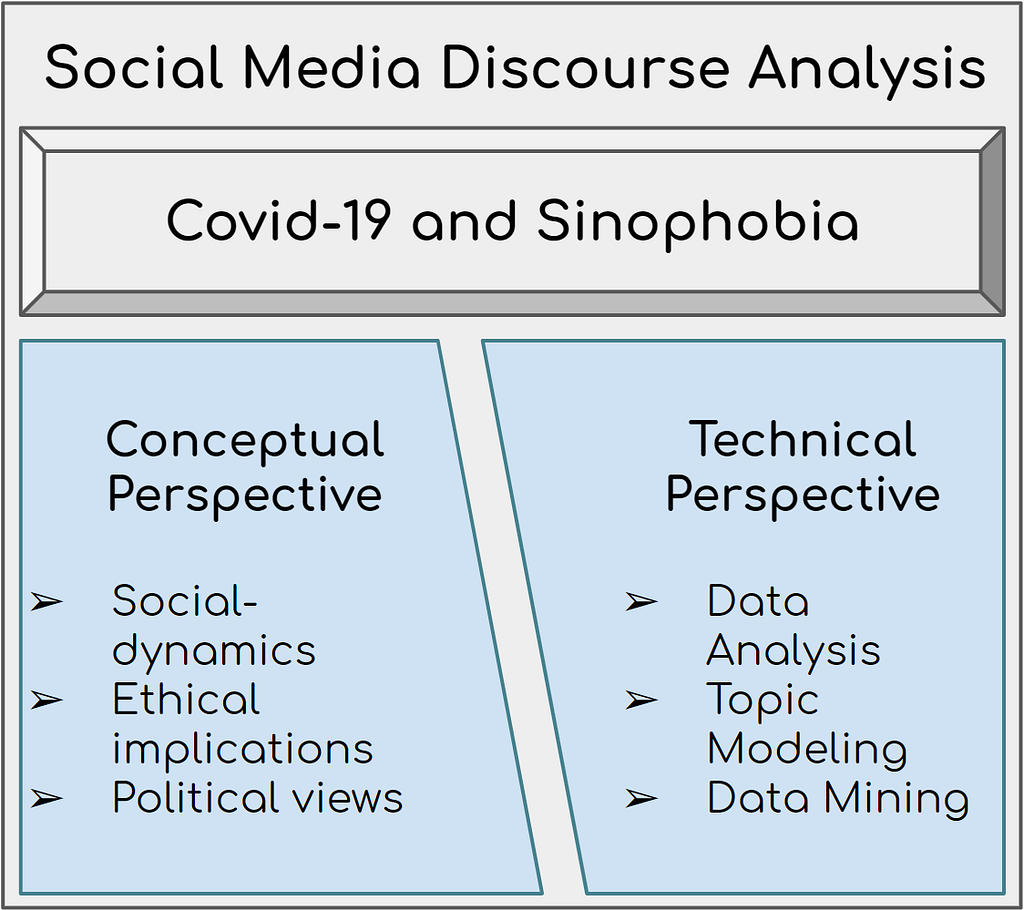
Covid-19 and the spread of Sinophobia
Written by Marta Ziosi and Philipp Wicke for AI For People — 14.05.2020
(TL;DR: The following article will introduce a blog series that aims to show how a discourse analysis on social media can be conducted and analysed. We start by investigating the topic of Covid-19 and the spread of Sinophobia on Twitter. The release of the first episode will be on the 24/05/20)
At a time when social distancing measures lead us to spend more time online and when our informational environment is influenced by targeted information systems, bots and internet trolls, technology can color this fragile set-up with the shade of misinformation, fake-news and hate-speech.
As we give in to our tendencies to associate technology to misinformation, we often fail to focus our energies on the potential it has to reinforce our capacity to analyse, clarify and visualize information.
This series presents itself as a counter-response to this tendency, by focusing on this potential. Clearly, it is insufficient to declare technology’s good side as a fiat, without rendering it a concrete reality for everyone. This is what this series will be about; revealing technology’s potential to bring clarity in a confused public discourse, while also giving people the tools to utilize this potential for themselves and the people around them.
We will host a series of episodes on topics for which online discourse plays an important role in the shaping of public opinion. Each episode will come as a ‘double issue’; a conceptual article where we analyse, through the use of technical tools, online discourse and a technical article where we thoroughly, yet accessibly, explain our process of data analysis and how to reproduce it.

The First Episode

Conceptual perspective:
One example, and the first episode of our series, will be the online discourse on Covid-19 and the spread of Sinophobia. This episode will address, among others, the confusion embedded in hashtags such as #ChineseVirus or #ChinaVirus — up to more racially-charged ones -, pairing a medical reality to geographical, political and social/racial one. Meanwhile, it will assess the presence of political sentiments, such as the Honk Kong protests and China’s role as a political actor, in this same discourse. Without meaning to focus on the normative character of these various elements — whether they are right or wrong -, this episode will treat them more as symptoms to better isolate and analyse in order to foster an understanding of the current discourse.

Technical perspective:
Side-by-side with the conceptual discussion, we will present how anyone who wills can validate those insights for themselves using simple programmatic means. More than just providing a source for our (your) claims, we will show how the source can be crafted and observed. We will discuss, and walk you through, how the conceptual discourse can be brought to light with tools of statistics and coding. For each episode, all code will be publicly available, thoroughly explained, and the results reproducible. Moreover, we hope to encourage anyone who is interested to collaborate on the ongoing or related investigations to get involved. If you want to follow along the technical perspective, minimal programming experience (Python) would be necessary.
Follow us here, on LinkedIn, Facebook, Twitter or Instagram to catch the first episode, out on the 24/05/20!
Image References:
[1] “20190714 Hong Kong Shatin anti-extradition bill protest” by Studio Incendo. Taken on July 14, 2019. Attribution 2.0 Generic (CC BY 2.0). Changes: Cropped and black-border.
[2] by Markus Spiske from https://unsplash.com/photos/hvSr_CVecVI Made with Canon 5d Mark III and loved analog lens, Leica APO Macro Elmarit-R 2.8 / 100mm (Year: 1993)
Analyzing online discourse for everyone: was originally published in AI for People on Medium, where people are continuing the conversation by highlighting and responding to this story.

